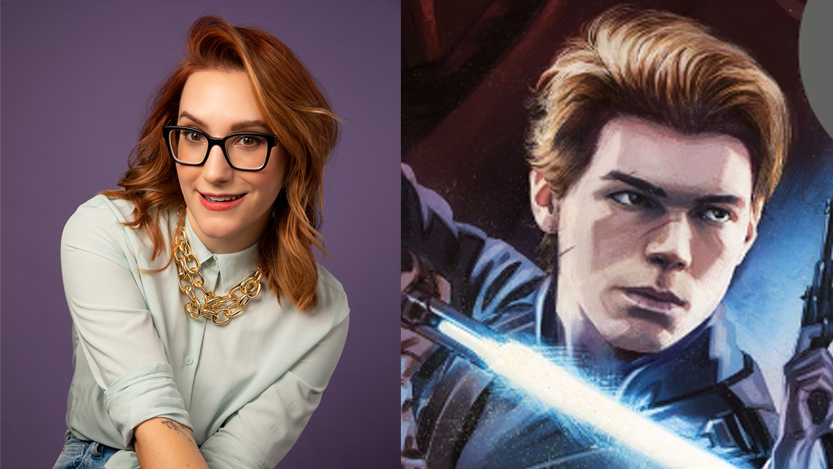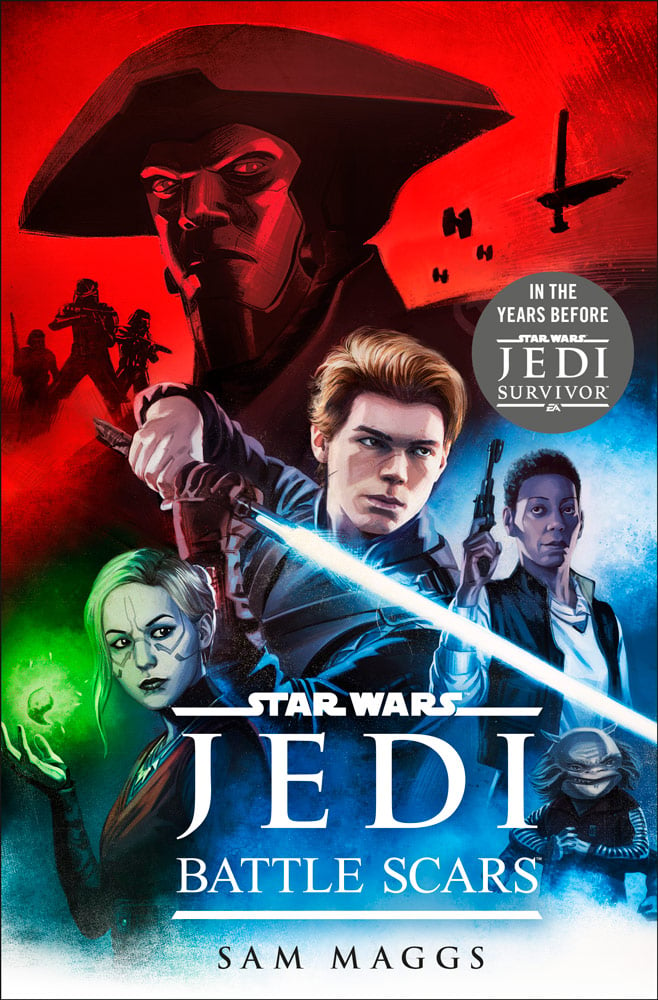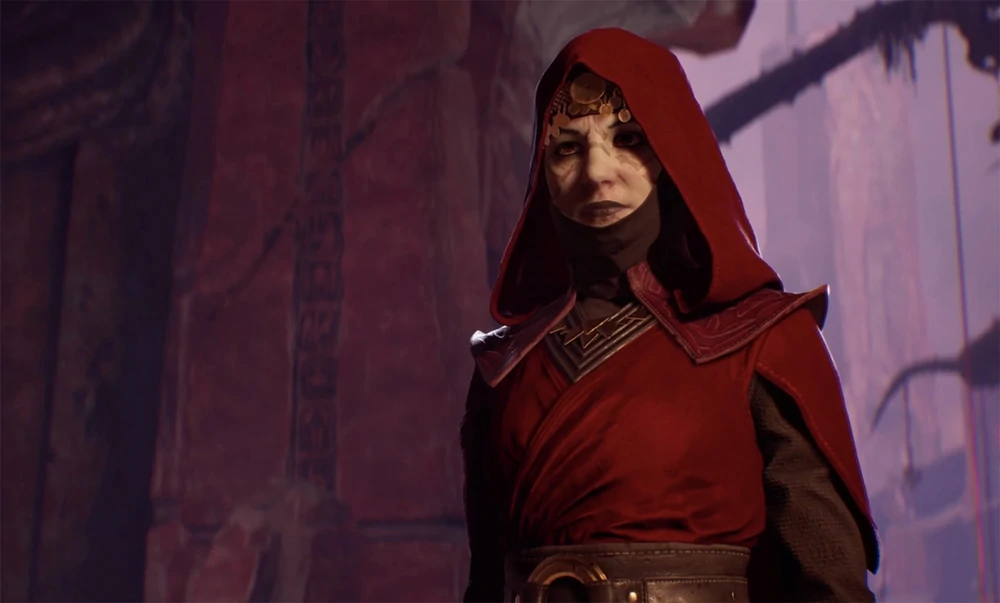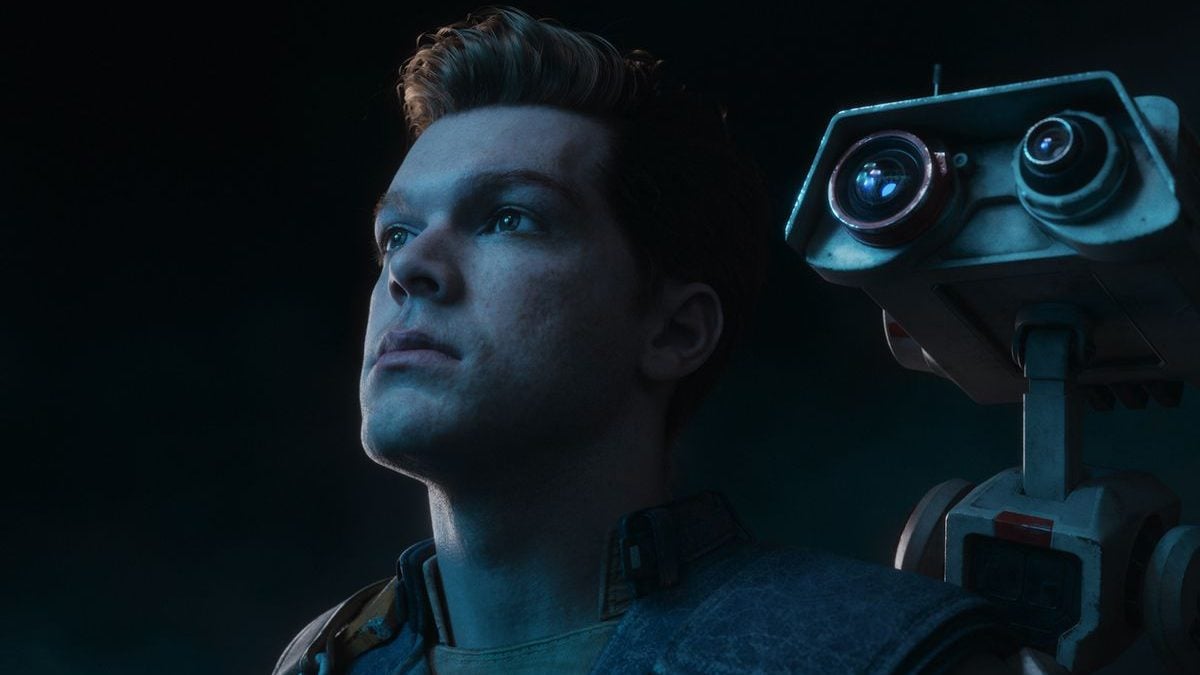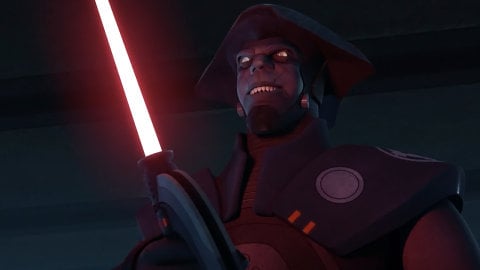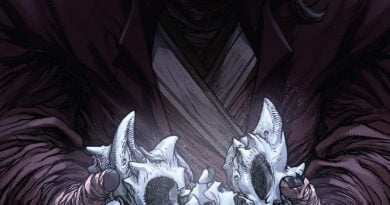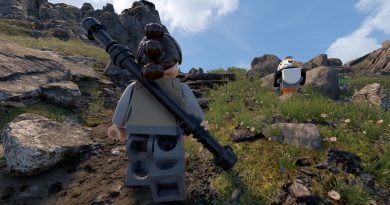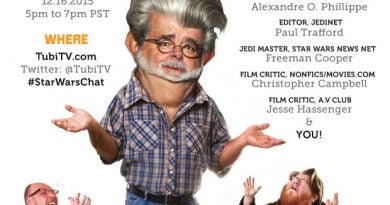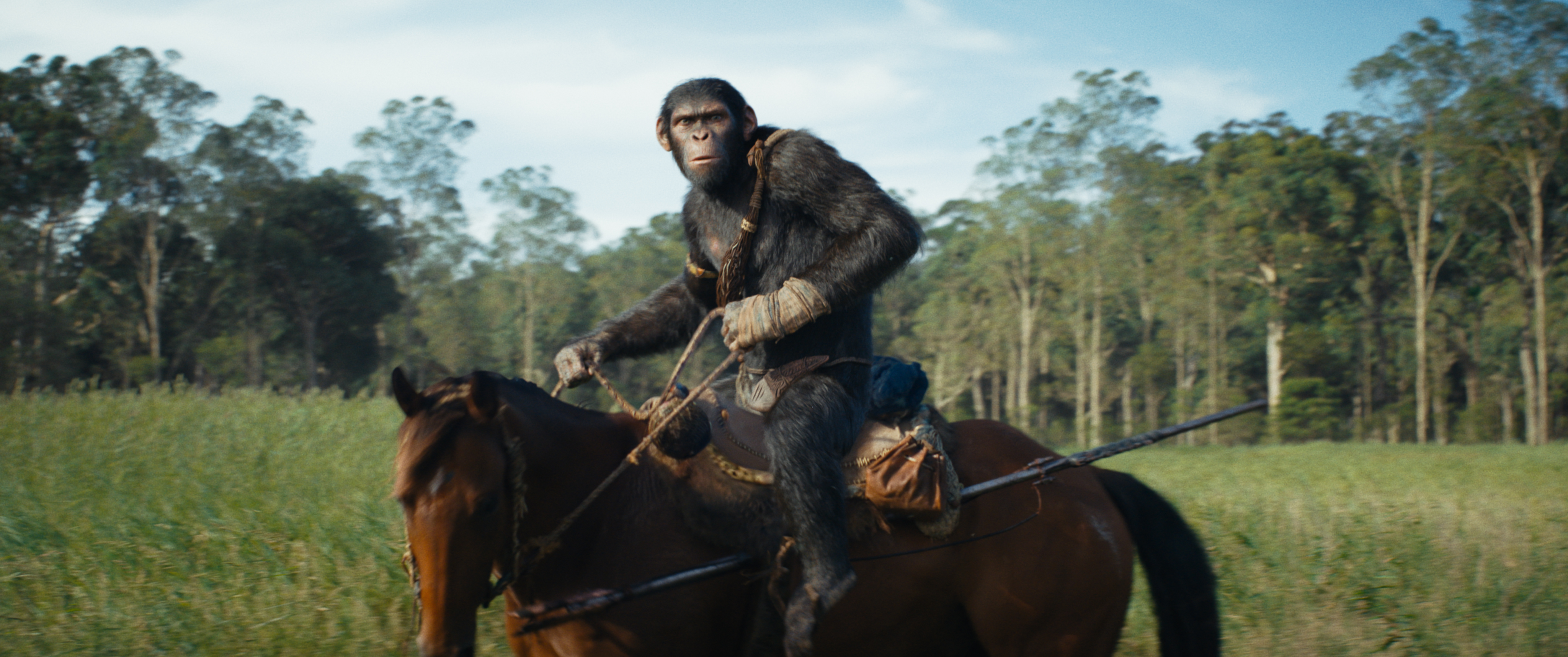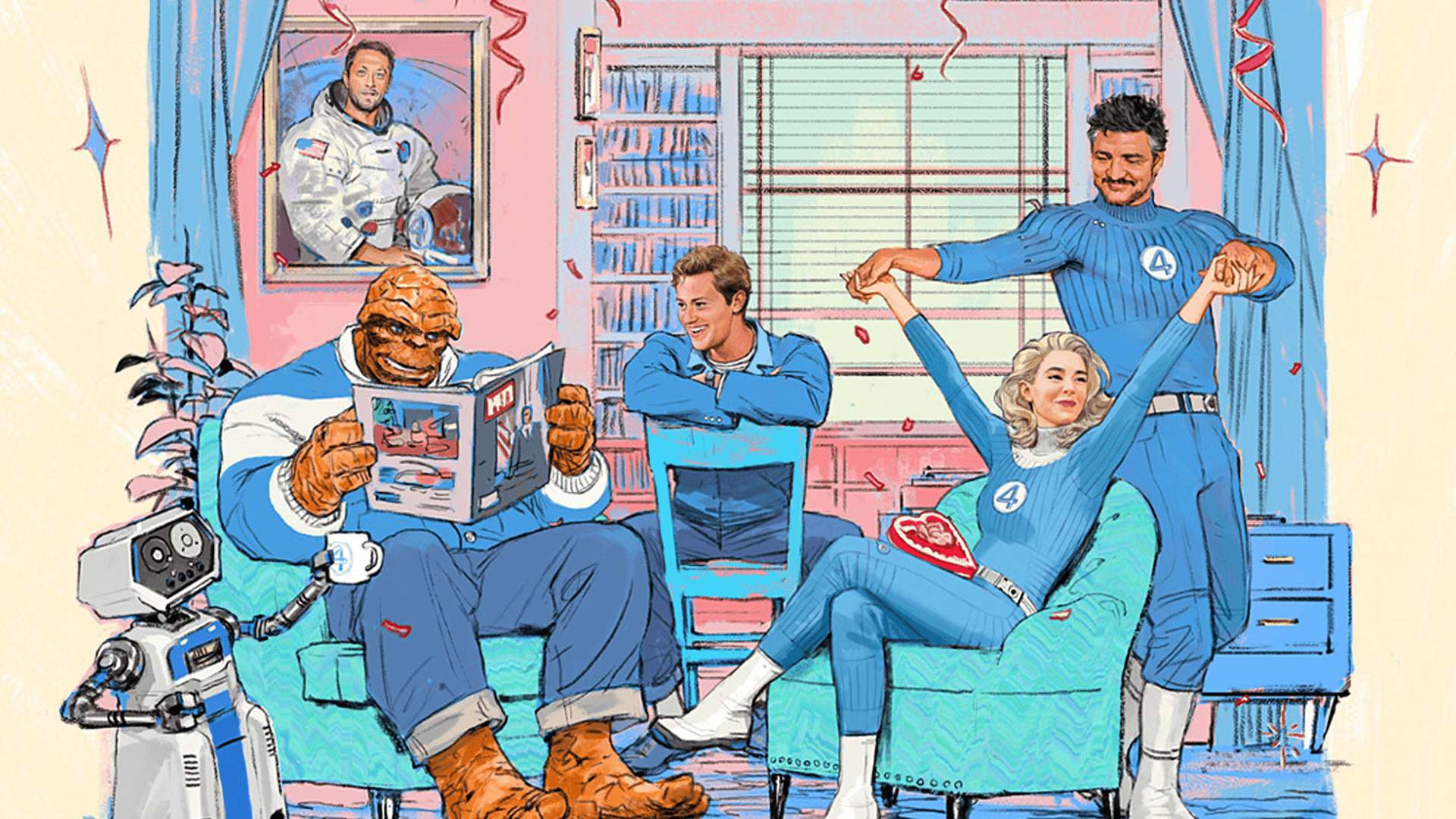SWNN Interview: Author Sam Maggs on Crafting ‘Star Wars Jedi: Battle Scars’, Defining Merrin, and That Ending
Star Wars Jedi: Battle Scars is available now wherever books are sold. The first Star Wars novel from author Sam Maggs tells the next story of Jedi Knight Cal Kestis and the Mantis team, setting readers and players up for Star Wars Jedi: Survivor on April 28. Check out our non-spoiler review and feel free to revisit our Book Discussion on SWNN Live! for our full thoughts on the novel.
I had the chance to speak with Maggs for a dive deep into how she crafted Star Wars Jedi: Battle Scars, the challenges associated with a tie-in novel, and the process behind developing several characters like Merrin. I was also morally obligated to see what she would say about the ending that is sure to ruffle some feathers on the road to Survivor. So with that, this interview will contain major spoilers about Star Wars Jedi: Battle Scars.
If you haven’t read the novel yet, go and come back. My one-sentence review is that you will regret not reading this book if you are in any way attached to these characters.
After the written portion of this interview, you will be able to find it in video form if that is the way you would prefer.
Q: Before we dig into the book itself, I wanted to quickly ask – you’ve done a whole lot in your career, but you’re just kind of getting going into Star Wars. You wrote a couple of comics, you wrote a short story a while back, so I just wanted to ask what types of themes do you like to incorporate into your Star Wars stories?
A: I think that the themes that become apparent in my Star Wars stories are pretty similar to the themes that are relevant to all of my work across a variety of IPs. I definitely have some things I like to touch on no matter what I’m working with, what characters I’m working with, or what world I’m in. All of my books are really focused on women and female friendships, women working together is a really common theme in all of my work. I loved to be able to do that with Merrin and Cere in Fallen Order, that was really important to me.
Another big theme for me is bringing representation. That’s something that I can’t always include, especially when working with IP properties. It was something that the team at Respawn made clear that it was something they wanted me to include in this book when I came on to the project so that was really exciting for me and I’m really glad about that. And generally, a sort of feeling of hope and lightheartedness that I think is sort of general to the Star Wars universe in general, I think, but it’s common in all of my work. I’m not really a grim-dark kind of writer. I prefer to approach serious topics with a sense of humor, which I think is a bit more difficult in a lot of ways, but I also think it’s more true in terms of how we actually deal with things in real life.
Q: From page 1 of the novel it is very clear to me that there is a deep love of Star Wars Jedi: Fallen Order, and of course that’s leading into Jedi: Survivor. Can you speak to your connection to the first game, if there is one, and how that influenced Battle Scars?
A: I’m a huge fan of Fallen Order. I played it when it came out, I lived with someone when it came out that worked on the game, so I felt very close to it when it came out and I loved it. It’s a great game, it has wonderful reviews, and it’s super fun to play, but what really attracted me to the game and what connected me to it so deeply, was the writing and the characters. Which, again, I think is a really common theme in all of Star Wars media. The world is cool, the Force is cool, and all of these ideas are really cool, but what we really love are these characters. And that was consistent and true with [Jedi: Fallen Order]. It was especially true for me with Merrin. And Merrin doesn’t come into the picture until really really late in the game, and I immediately found myself like ‘Oh my gosh, I wanna know about her. I wanna hang out with her more. I wanna know what her story is, I want to get into her head.’ I think the second I finished the game I tweeted like ‘Let me write the canon book!’
It was certainly a real microcosm of what makes Star Wars so wonderful, which is these unique and incredible characters. So I loved it and I immediately wanted to hang out with them a little bit more. I’m a real sucker for found family, for a ragtag space crew, for an underdog, so it kind of hit all of my favorite sci-fi buttons, to be honest.
Q: So let’s jump right into it. Merrin. She steals the book through and through. Every single scene she’s in, she’s wonderful and I love what you did with that character. So could you go into a little more detail into how you approached her?
A: What was most interesting for me about Merrin was thinking about the fact that she had virtually been alone on Dathomir for years, with no one to talk to except for Malicos and some of his brothers. And she had sort of been stewing in anger, hate, frustration, sadness, and all of these emotions that are really really hard to heal when you don’t have people to talk to about it. Or when the person you can talk to about it is sort of encouraging the worst parts of what those emotions do to you and make you become. And I think that the subtitle for this book could really be ‘Childhood Trauma’, because everyone on the Mantis is dealing with some sort of… And off the Mantis too, they are all dealing with some sort of really intense trauma in their past.
We usually in Star Wars get to explore that from the perspective of the Jedi (not always, we have a lot of great new books now from the antihero or villain perspective). But most of the time we’re looking at things from a sort of good guy perspective, just in media or in books in general we don’t get to look at things from sort of a female antihero… I mean, Merrin is kind of bad in a lot of ways. Her powers come from the Dark Side, Dathomir is not like a great place necessarily. So it was really exciting to come in and open up Merrin’s head and say ‘How would she actually feel about what she’s been through and what her goals are and why? And what does it look like when someone allows themselves to be consumed by the need for vengeance?’
Q: That leads me to the next thing I wanted to get into. This book leads us directly into a video game. I wanted to ask about the process of writing a book that ties into an upcoming video game. Was that tricky? Did it come naturally?
A: It was a situation where there were a lot of masters to serve at the same time. Because you want primarily the book to be a good story, with a beginning, a middle, and an end. But you also have the folks at Lucasfilm who have characters and ideas and stories across the board and all forms of media coming out that you have to work around and through to make sure that you’re not disrupting any of that or stepping onto anyone’s toes. And you also have the Respawn team, who are coming up with this next game that has its own story and its own themes, that you want to be setting up without revealing too much and stealing their glory or their thunder in any particular way, you want that story to stand on its own. But also, hopefully not feel like it doesn’t go anywhere because it’s setting something else up, you want it to be its own coherent story. So it felt like a lot of bars to clear in order to make a good book that did everything it needed to do. I think we got there, I think reading Battle Scars is going to set you up really really nicely for starting to play Survivor. It’s going to give you a lot of insight into what the characters are feeling when you get started, it’s going to explain where the characters are emotionally, and maybe a little bit physically once you get started with the game. It’s gonna give you a lot of really good insight that you wouldn’t have otherwise into what’s going on with the characters when you start Survivor, which starts in a really interesting place.
Q: Let’s move on to Cal. He is, of course, the main character of the story, and as we are approaching Survivor, you had to kind of get him there and we saw a lot of that, with how he interacted with every member of the Mantis. So I just kinda wanted to ask you to walk me through the process of how you approached Cal in this book.
A: I mean, Cal is a very earnest character. He’s a video game protagonist, which means he has a lot of personality, but in a lot of ways he also serves as a cipher because you also put your own personality into him as a player. So I think that the book, as opposed to the book… When you play a video game, I think that a lot of the supporting cast is allowed to shine where the player character sometimes isn’t necessarily. You don’t want to avoid the player to feel a certain way when they’re controlling the character, you should be kind of careful with that stuff. So it’s easier to give bigger and louder personalities to them.
So the real opportunity in this book with Cal is that… Ok, we saw what we saw in Fallen Order on the surface of this character and we got what we were able to get out of a playable character in the ways that served the video game. But now we can take that to the next level by diving into Cal’s head and his thoughts and by getting into why is he so earnest and why is this the way he expresses himself, and how does he really feel about this crew? Why does he react the way that he reacts towards them? I think it’s a really unique opportunity to spend that kind of time that you don’t have in a video game because it is so focused on action, in order to make a good triple-A action-adventure game you don’t want to spend a lot of time standing around like ‘don’t let her see you feeling’, you know? That’s not the purpose of the game, but it is the purpose of the book.
So it was really cool to sit down with the Respawn team’s initial documentation for Cal, with their ideas about what informs him, what informs his thoughts, and his opinions, and be able to build and elaborate on that from there. I think it’s a really unique opportunity with the book that you don’t get in the game.
Q: So my brain kind of just ran wild with some of the Easter Eggs that you put in there with old Legends lore, like bringing back the Keshiri from Lost Tribe of the Sith, and then some Knights of the Old Republic lore as well. Obviously Fallen Order dealt with ancient civilizations and stuff like that, so I wanted to ask if there is anything to that with Cere, because she’s really tied to her past with Eno Córdova as well, so I was wondering about that, or maybe if you just threw that stuff in there because you’re just a fan of old Legends lore?
A: I think it’s a little bit of both. I’m a huge fan of Knights of the Old Republic, I used to work for BioWare, I worked on the remake for a short time, I love that game and I thought they would be very fitting Easter eggs to kind of tie old Star Wars video games to new Star Wars video games, in a way that made sense narratively, which to your point is through Cere’s almost obsession with collecting and archiving Jedi objects and establishing a sort of history, and therefore a future, for the Jedi through that. But also, I’m a deep lord nerd for this kind of stuff. My favorite thing about working for established IPs is to kind of get into quieter histories or characters, races, and experiences that we haven’t gotten to see before. That was my idea with the Keshere.
The same thing goes for the Fifth Brother. We see him in Obi-Wan Kenobi, Rebels, which is really cool, but we virtually know nothing about him. So one of my favorite opportunities with this book was to give him a bit of a backstory, give him a history, and tell us why he is the way that he is.
This is the part where I started asking Maggs about some pretty heavy things inside the book, so this is your final spoiler warning.
Q: Which is perfect because next I wanted to ask you about the Fifth Brother. I’ve always liked the character but he’s never stood out to me in any sort of way, so it was really cool to get that inside look into how he thinks. So I wanted to ask why do you think he was an important villain for this particular story?
A: I like the Fifth Brother and what we were able to do with him because, without giving too much away, his history was impacted really negatively by the Jedi Order. And listen, I think the Fifth Brother had a point. I think that the best antagonists are the ones that think of themselves as the heroes and that is certainly the case here with the Fifth Brother. That felt really important to get across, the fact that everyone has their own idea of what’s right (which is not to say that I think the Sith are right, let’s be clear about that). But you know, he thinks he’s right for a variety of reasons, and I think that’s really important. And I think it was also really important to connect Cere to another Inquisitor, where she’s sort of feeling the trauma of what happened with Trilla, and how does that trauma continue to manifest for her in different ways. In Fallen Order we see that manifest in that she decided to go to the Dark Side. We know that she’s not gonna do that anymore, we know that she’s learned her lesson, so what happens now? That trauma still exists in her, so how is she gonna handle it and heal it, or maybe unhealthily put a band-aid on it when she runs into another Inquisitor?
Q: The Fifth Brother is the primary antagonist, but he doesn’t really feel like it. To me, someone who kind of feels like the unintentional antagonist is Fret. I really liked the character and how she played off of everyone else, but in a way, she immediately caused these seemingly irreparable rifts in a group that seemed perfect at the end of Fallen Order. So was that a difficult tightrope to walk as such a fan of these characters?
A: First of all, I love that you said that the Fifth Brother doesn’t feel like the primary antagonist in a way that Fret does, because that is my favorite way to read books and to write books, which is that the external threat is there and it’s important, but it is fundamentally external. The real stuff that matters is the internal conflict, which in this case is what happens when an outsider comes in and becomes part of the crew? Which is bound to happen eventually, that’s how this crew works. So the real conflict is what happens when someone new shows up and how does everybody react to that? And I think that you said Fret kind of causes a rift between these characters, but I would almost say that she reveals the existing rifts that have formed between these characters over the years between Fallen Order and this book, where they’ve been all kind of getting along but these tensions have been forming and issues have been forming and they are trying to ignore them, they are bubbling but they’ve never been brought to the surface. Fret causes all of that to come to the surface. It also forces them to look at their relationships with each other based on the way that they each interact with Fret. What happens when Merrin becomes closer to Fret, and maybe Cal gets a little bit jealous of that and doesn’t really understand why? Or, you know, Cere looks at Fret as a threat right away and also has to look within herself to figure out why is she feeling that way? It really brings to the surface a lot of issues that the crew has been trying to keep below, because dealing with them will simply be too difficult. And she forces them to have to. She is sort of the unintentional catalyst.
Q: I have to ask you about the ending. That final confrontation with the Fifth Brother blew me away, leading into everything that happens after that, but the specific ending with Cal and Merrin together…? I don’t know, but I wanted to get your perspective on that ending and was that important for you to leave the book off with that hanger?
A: It is important, and I think you should play the next video game if you want further answers to that question (laughs). I hate to be that guy! Again, there are several years in between the end of Fallen Order and the start of Survivor, but I think it does end on a note that could be setting something up for the future, so…
Q: I just wanted to wrap up by asking you what’s next for you. Do you want to tell more stories in Star Wars? What kind of stories do you want to tell or characters do you want to explore? Would you like to get into other media in Star Wars like gaming, at all?
A: Yeah, I’m working on a number of different projects right now, none of which I can talk about, but for Star Wars, I would love to keep working on this world. I love these characters, I love the universe, I think it would be really fun to do something with Bo-Katan… She’s obviously getting a lot of love with The Mandalorian, and I’m in love with Katee Sackhoff, so that probably helps. But I think she could be a really really fun character, though I’m sure they already have plans for her in the works.
I think that’s the great thing about Star Wars, in that there is an unending wealth of stories you can tell, people you can go to… And to be totally honest with you, I just want to read more Merrin, all of the time. So I don’t know, a Merrin comic, that’s what I would like to be next. That’s my next pitch to someone!
Here is the full interview with Sam Maggs on her book, Star Wars Jedi: Battle Scars. Be sure to subscribe to our YouTube channel for regular content and discussions on all things Star Wars.
Nate uses his love for Star Wars and movies in general as a way to cope with the pain of being a Minnesota sports fan. When he's not at the theater, you can usually find Nate reading a comic, listening to an audiobook, or playing a Mario video game for the 1,000th time.

